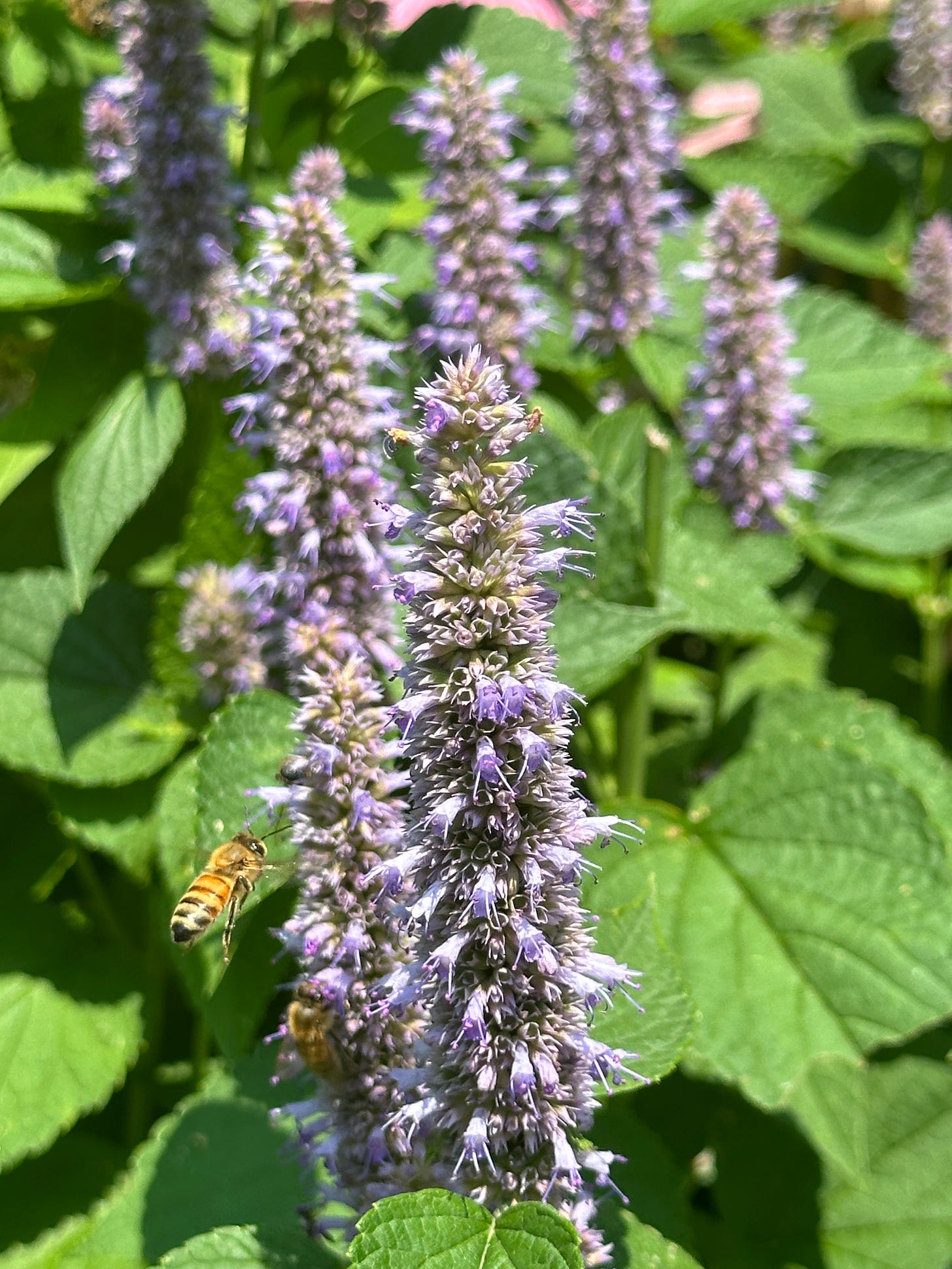A very popular native plant with pollinators, the giant hyssop is in bloom this time of year. It is truly a magnet for all sorts of bees and will to a lesser extent attract butterflies and hummingbirds. The Xerces Society for Invertebrate Conservation rates this plant high for bee pollination:
Agastache foeniculum
Members of the mint family tend to be highly attractive to bees, and giant hyssop is no exception – in fact, it happens to be one of the most attractive plants for bees and supports a diversity of pollinators. Historically, mass plantings of giant blue hyssop were established in parts of the Midwest and Canada specifically as a “honey plant” to support apiaries. While bees probe the deep tubular flowers for nectar, skippers, fritillaries, and the occasional hummingbird may also visit the plant.
Though it is in the mint family, it does not spread aggressively like culinary mint, though it may be prone to re-seeding throughout the garden. As it’s generally ignored by rabbits and deer, it may be used as a barrier to keep them away from more sensitive plants.
The plant is easy to grow and will fill in empty spaces in garden or naturalized areas with little effort when planted. I started my first patch from seed and now every fall I cut off some seedheads and scatter them carefully in new areas that I want to develop. The plants can also be transplanted in the spring. Best growing conditions are full to part sun in well-drained soils. It is also a big plus that deer do not touch it - maybe they are not fond of the licorice scent of the leaves. In the fall I do leave plenty of seedheads standing since goldfinches, juncos and sparrows will eat the seeds. The only real effort in caring for these plants is removing the past year’s stalks in spring. All in all, an incredible and inexpensive natural solution to help out our bees in the backyard!




